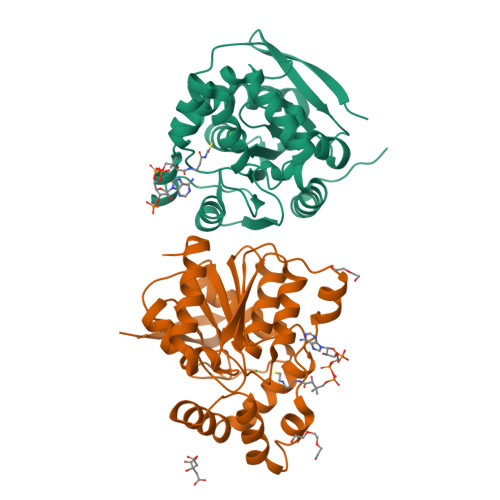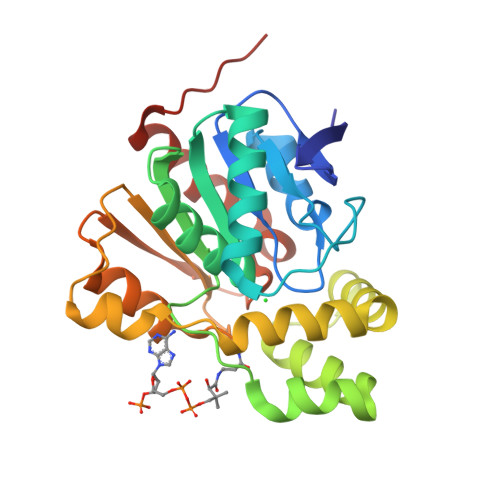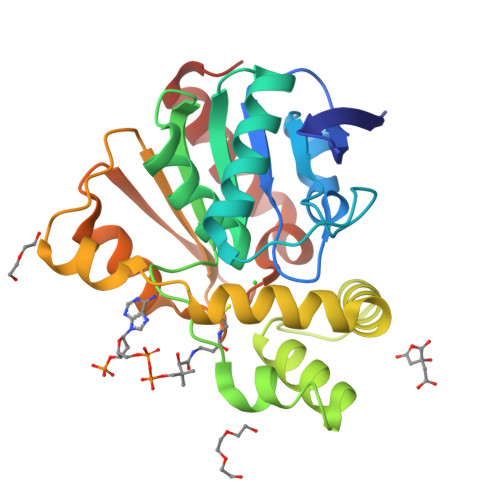Structural and Biochemical Characterisation of Archaeoglobus Fulgidus Esterase Reveals a Bound Coa Molecule in the Vicinity of the Active Site.
Sayer, C., Finnigan, W., Isupov, M.N., Levisson, M., Kengen, S.W., Van Der Oost, J., Harmer, N.J., Littlechild, J.A.(2016) Sci Rep 6: 25542
- PubMed: 27160974
- DOI: https://doi.org/10.1038/srep25542
- Primary Citation of Related Structures:
5FRD - PubMed Abstract:
A new carboxyl esterase, AF-Est2, from the hyperthermophilic archaeon Archaeoglobus fulgidus has been cloned, over-expressed in Escherichia coli and biochemically and structurally characterized. The enzyme has high activity towards short- to medium-chain p-nitrophenyl carboxylic esters with optimal activity towards the valerate ester. The AF-Est2 has good solvent and pH stability and is very thermostable, showing no loss of activity after incubation for 30 min at 80 °C. The 1.4 Å resolution crystal structure of AF-Est2 reveals Coenzyme A (CoA) bound in the vicinity of the active site. Despite the presence of CoA bound to the AF-Est2 this enzyme has no CoA thioesterase activity. The pantetheine group of CoA partially obstructs the active site alcohol pocket suggesting that this ligand has a role in regulation of the enzyme activity. A comparison with closely related α/β hydrolase fold enzyme structures shows that the AF-Est2 has unique structural features that allow CoA binding. A comparison of the structure of AF-Est2 with the human carboxyl esterase 1, which has CoA thioesterase activity, reveals that CoA is bound to different parts of the core domain in these two enzymes and approaches the active site from opposite directions.
Organizational Affiliation:
The Henry Wellcome Building for Biocatalysis, Biosciences, University of Exeter, Stocker Road, Exeter EX4 4QD, UK.
























